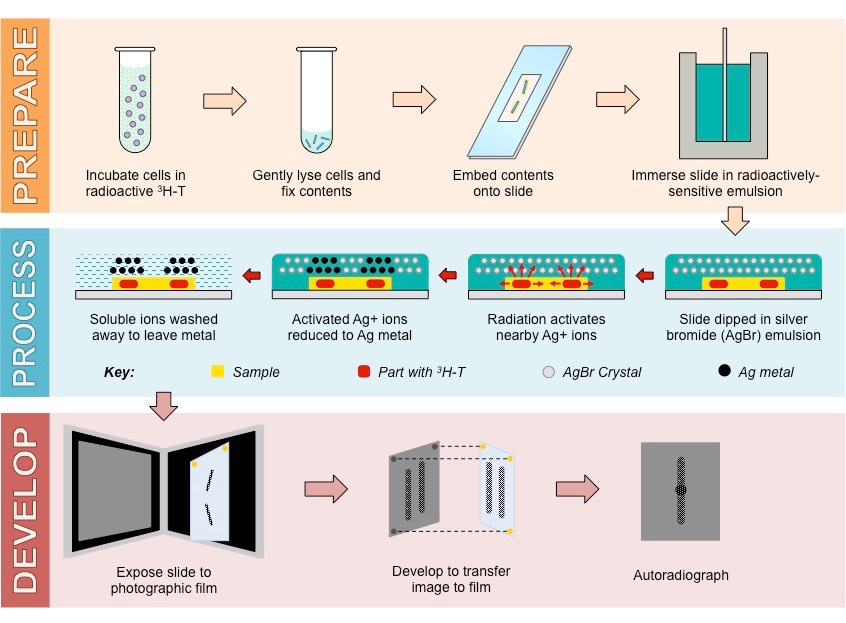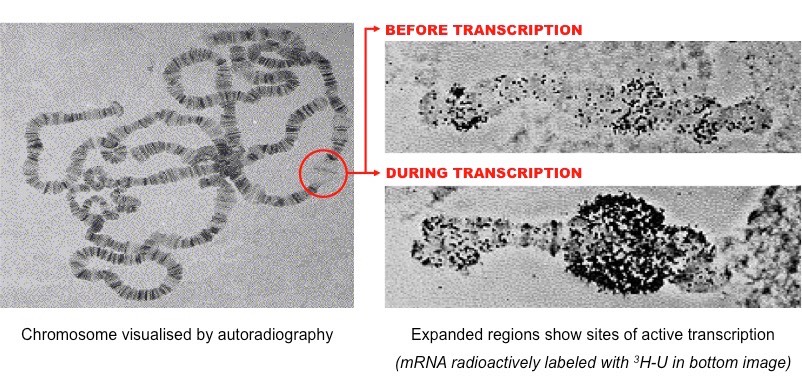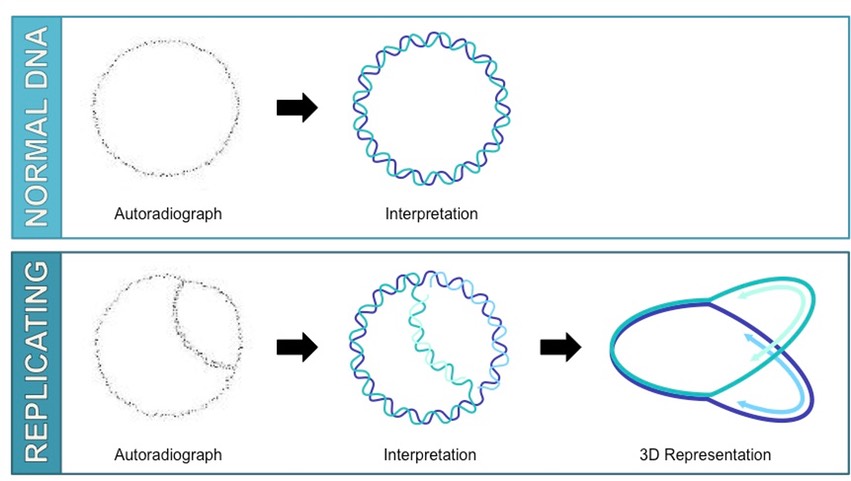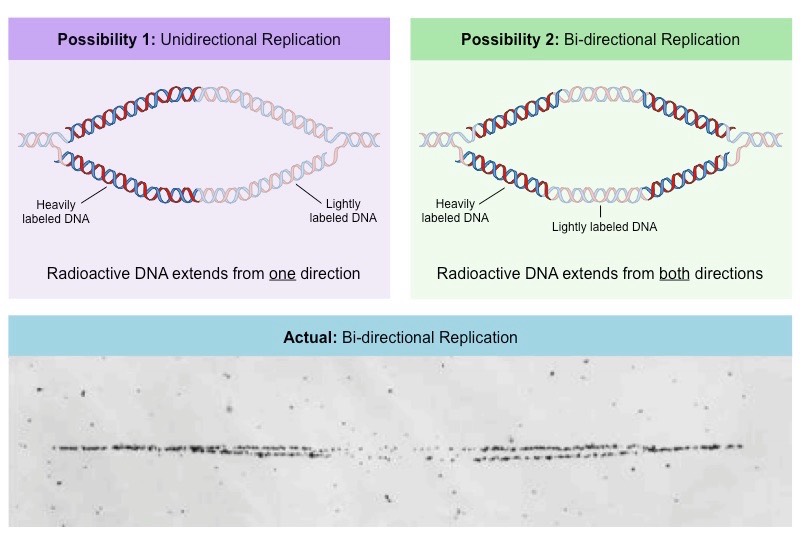![]()
Application:
• Cairns’ technique for measuring the length of DNA molecules by autoradiography
Autoradiography
- Cells are grown in a solution containing radioactive thymidine (tritiated thymidine – 3H-T)
- The tritiated thymidine is incorporated into the chromosomal DNA of the cell (3H-T is used as thymidine is not present in RNA)
- The chromosomes are isolated by gently lysing the cells and fixing the chromosomes to a photographic surface
- The surface is then immersed in a radioactively-sensitive emulsion containing silver bromide (AgBr)
- The radiation released from the tritiated thymidine converts the Ag+ ions in silver bromide into insoluble metal grains
- Following a period of exposure, excess silver bromide is washed away, leaving the silver grains to appear as small black dots
- When the photographic film is developed, the chromosomal DNA can be visualised with an electron microscope
Summary of the Process of Autoradiography

Chromosome Length
- John Cairns pioneered a technique for measuring the length of DNA molecules by autoradiography
- Previously, chromosome length could only be measured while condensed during mitosis (very inaccurate due to supercoiling)
- Cairns used autoradiography to visualise the chromosomes whilst uncoiled, allowing for more accurate indications of length
- By using tritiated uracil (3H-U), regions of active transcription can be identified within the uncoiled chromosome
Uncoiled Chromosomes Identified with Autoradiography

Other Discoveries
John Cairns was further able to use autoradiography to demonstrate key events which occur during chromosomal replication
- DNA replication involves formation of a replication bubble (and prokaryotic replication involves a single origin of replication)
- DNA replication is bi-directional (it occurs independently at both ends of the replication bubble)
1. Evidence for the Formation of Replication Bubbles (Prokaryotes)

2. Evidence that Replication is Bi-Directional

Interview with John Cairns about Autoradiography
Excerpt part of the Oral History Collection of the CSHL Digital Archives
